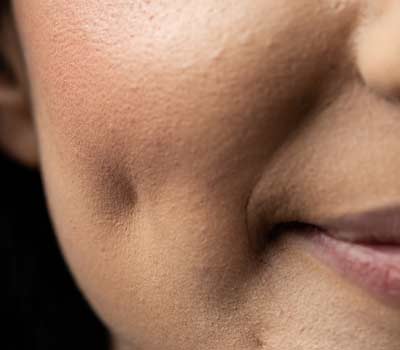 You know that little hole people have in the middle of their cheek when they smile and it’s synonymous with charm? The natural dimple pleases both men and women, but those who were born without it can now get one thanks to advances in aesthetic medicine. Called Dimpleplasty.
You know that little hole people have in the middle of their cheek when they smile and it’s synonymous with charm? The natural dimple pleases both men and women, but those who were born without it can now get one thanks to advances in aesthetic medicine. Called Dimpleplasty.
The dimples formed on the cheek when smiling are considered an extra charm by many people. Despite being nice, these small cavities are a genetic anomaly of the muscle responsible for shaping the face.
But what is dimpleplasty?
Dimpleplasty is a definitive plastic surgery to obtain dimples that is becoming a trend among millennials – that is, people born between the 80’s and the end of the 20th century (Generation Y).
Despite being a simple and quick intervention, it is necessary to think carefully before undergoing the procedure and take great care to select a good professional to ensure a successful result.
After all, unlike the natural dimples that appear with a smile, those that result from surgery are visible all the time, which can give an exaggerated or artificial impression to the face.
How is dimpleplasty performed?
According to experts, the procedure is performed under local anesthesia and involves an incision in the inner part of the mouth, close to the cheek, and the removal of a portion of local fat – allowing the surgeon to fix the skin directly to the muscle, the which gives rise to the famous little holes.
It is possible to perform surgery to create dimples in the chin as well. In this case, the skin is attached to the bone.
The procedures take around 40 minutes – a maximum of one hour – and the patient is released on the same day. However, since the surgery can cause bruising and swelling during the postoperative period, the result can take up to two months to appear completely depending on how the body reacts in the recovery period.
How is the recovery/post-op?
Even though it is a very simple surgery, rest is recommended for 24 hours after the procedure. In addition, the patient must stop smoking or drinking alcohol within 15 days.
Doctors also recommend that the person avoid sun exposure and try to chew slowly to avoid sudden movements or trauma to the operated area.
Oral hygiene should be even more prioritized during this period, as well as the use of alcohol-free mouthwash after meals to prevent infections and bleeding.
There is a very low rate of complications such as infection, reaction to the stitch, and bruising. Swelling for a short period is common and the result will only be fully noticeable in a month or two. Unlike natural dimples, which appear only when people smile, acquired dimples are permanent.
What are the risks of dimpleplasty?
Surgery is contraindicated for:
- pregnant women
- lactating women
- People with serious diseases in the oral cavity, such as infections.
- Patients who use anticoagulants or who have healing problems
In the case of hypertensive, diabetic or coronary disease patients, the procedure will depend on medical clearance.
And, as with any surgery, when it is performed incorrectly, or by an inexperienced professional, there is a risk of causing damage to the lips and salivary glands, in addition to being able to cause injuries leaving the face asymmetrical.
Finally, it is worth mentioning that it is important to have a good conversation with the surgeon before opting for dimpleplasty, as the doctor can make a complete evaluation and indicate other types of aesthetic procedures that may be more effective for improving facial aesthetics, such as face lift or bichectomy.







